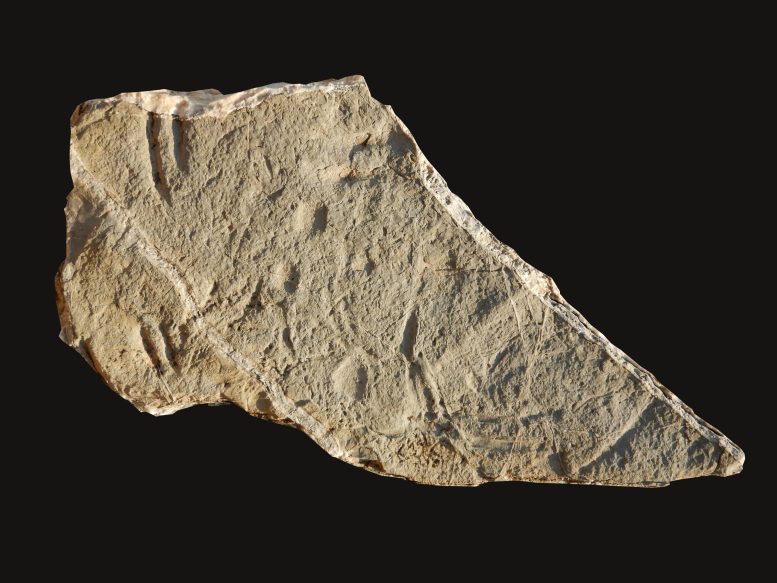
Pictured is a rock slab with the earliest evidence for deep-sea vertebrates. The fossil evidence consists of pits and trails produced by feeding fishes during Early Cretaceous times. The dish-like structures are approximately 4 cm wide. Credit: Andrea Baucon
Scientists discover missing evolution puzzle piece in 130-million-year-old rocks. The discovery is a result of an international collaboration, in which the Faculty of Sciences of the University of Lisbon (Portugal) is involved.
Despite vertebrates being a dominant element in contemporary deep-sea ecosystems, there has been no fossil evidence of deep-sea fishes older than 50 million years. Now, the recent unearthing of exceptionally rare fossils provides the earliest known evidence of deep-sea fishes. This pushes back the timeline of deep-sea colonization by a staggering 80 million years.
The findings were recently published in the journal Proceedings of the National Academy of Sciences.
“When I first found the fossils, I could not believe what I was seeing,” says paleontologist Andrea Baucon, leader of this study, researcher at the University of Genova (Italy). It was he who discovered the fish fossils in the NW Apennines, close to Piacenza, Modena, and Livorno (Italy).
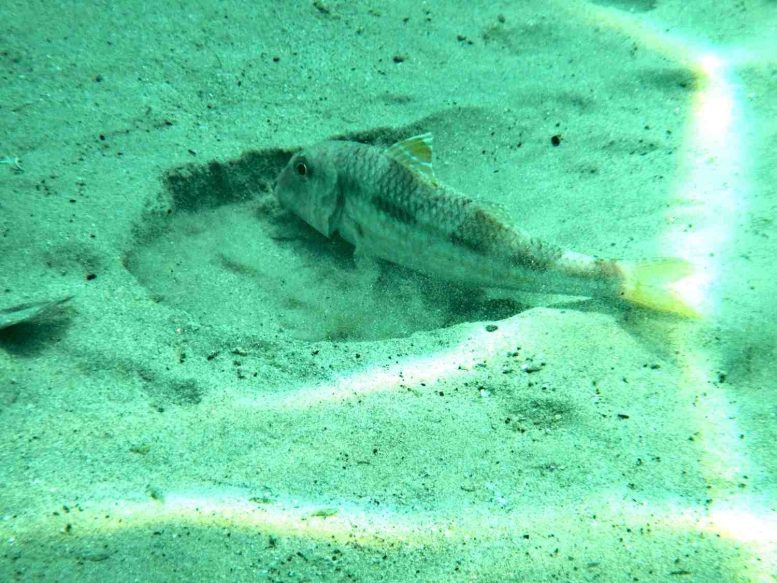
Red mullet producing a feeding pit in the shallow seafloor of the Ligurian Sea. The new study report identical structures from the Cretaceous deposits of the N Apennines, Italy. Results indicate that the fossil feeding pits are the earliest evidence for deep-sea vertebrates. Credit: Andrea Baucon
The reason for this astonishment is the remote age of the fossils, which predate any other evidence of deep-sea fish by million years. The newly discovered fossils date back to the Early Cretaceous (130 million years ago). “The new fossils show the activity of fishes on a dinosaur-age seafloor that was thousands of meters deep,” adds Andrea Baucon.
Using photogrammetry, scientists delivered a photo-textured height map of fossil feeding pits and trails. These represent the earliest evidence for deep-sea vertebrates. Credit: Girolamo Lo Russo
The newly discovered fossils are rare and unusual. They comprise bowl-shaped excavations produced by ancient feeding fishes, as well as the sinuous trail formed by the tail of a swimming fish, incising the muddy seafloor. These trace fossils do not comprise body fossils such as fish bones, but they record ancient behavior. As such, the Apennine fossils mark a critical point in space and time. It is the point at which fishes moved out of the continental shelf and colonized a new harsh environment, located far away from their original habitat.
Thousands of meters below the surface of the Tethys Ocean – an ancient ocean that existed between 250 and 50 million years ago, a precursor of present-day Mediterranean Sea -, the earliest deep-sea fishes faced extreme environmental conditions relative to their shallow water origins: total darkness, near-freezing temperatures and enormous pressures challenged the survival of these pioneers of the abyss.
The video shows a chimera swimming over the sediment at the Kermadec Trench (depth: 1544 m) and then plunging its mouth into the sediment to feed. In the new study, scientists studied the behavior of modern fishes to understand the behaviors associated with the earliest fossils of deep-sea vertebrates. Credit: Thomas Linley, Alan Jamieson
Such extreme conditions required adaptations for deep-sea life that are evolutionary innovations as significant as those that allowed the colonization of the land and the air, such as wings and limbs, for example.
The newly discovered fossils represent not just the earliest deep-sea fishes but the earliest deep-sea vertebrates. The evolution of vertebrates – backboned animals – has been punctuated by habitat transitions from shallow marine origins to terrestrial, aerial, and deep-sea environments. Invasion of the deep sea is the least-understood habitat transition because of the low fossilization potential associated with the deep sea.
“The new fossils shed light on an otherwise obscure chapter of the history of life on Earth,” comments Carlos Neto de Carvalho, a researcher at Instituto Dom Luiz, Faculty of Sciences of the University of Lisbon (Ciências ULisboa) (Portugal).
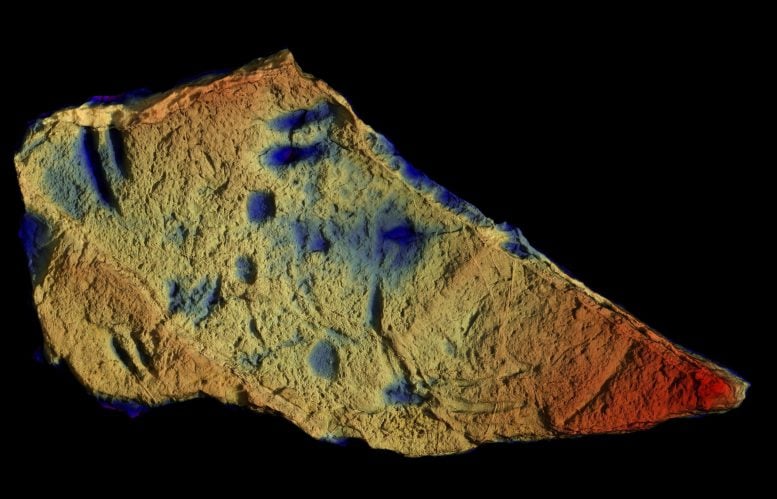
Height map of the rock slab above, preserving the earliest evidence for deep-sea vertebrates. Color coding is related to height, with the warmer colours at the higher elevations. Credit: Girolamo Lo Russo
The Apennine fossils force scientists to reconsider which factors might have triggered the vertebrate colonization of the deep sea. The authors propose that the trigger was the unprecedented input of organic matter that occurred between the Late Jurassic and the Early Cretaceous. The availability of food in the deep seas favored bottom-dwelling worms, which, in turn, attracted fishes that used specific behaviors to expose them.
In this study, researchers turned to present-day seas to understand fossil behavior, studying the behavior of modern fishes in their habitats. Scientists explored the depths of the Pacific Ocean to study chimeras, also known as ghost sharks, in their living environment.
The new fossils are identical to structures produced by modern fishes that feed by either scratching the seafloor or exposing their bottom-dwelling prey by suction. This is reminiscent of Neoteleostei, the group of vertebrates that includes modern jellynose fishes and lizard fishes.
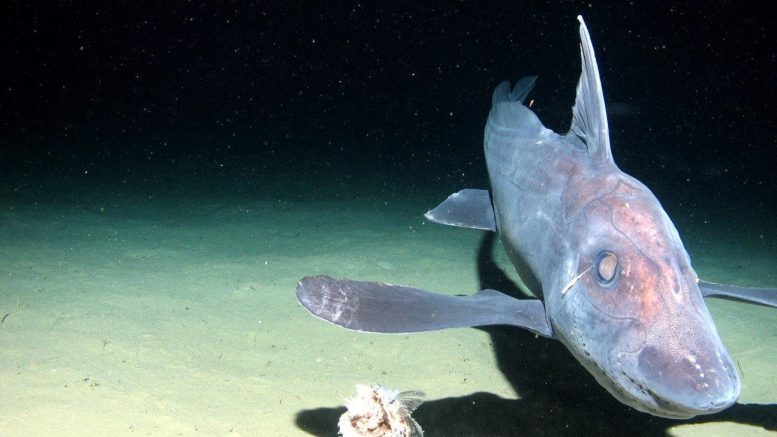
Chimaera swimming over the sediment at the Kermadec Trench in the Pacific Ocean (depth: 1544 m). In the new study, scientists studied the behavior of modern deep-sea fishes to understand the formation mechanism of Cretaceous trace fossils. Results reveal the earliest evidence for deep-sea vertebrates. Credit: Thomas Linley, Alan Jamieson
“Contrarily to the common belief, the deep-sea floor sediments are packed with fossil remains of ancient life, but normally from small organisms that dwell well above in the water column as phyto or zooplankton,” explains Mário Cachão, co-author of this study and researcher at Instituto Dom Luiz, Ciências ULisboa.
“However, to discover and interpret direct evidences of organic activity of vertebrates imprinted and geologically preserved in such sediments, after being tectonically deformed and exposed as the Northern Apennine mountain range, emplaced mostly during the Miocene and Pliocene geological epochs – that is, approximately the last 20 million years ago -, is a very, very, rare find indeed,” adds Mário Cachão.
The newly discovered fossils may represent the first major step in the origins of modern deep-sea vertebrate biodiversity. The roots of modern deep-sea ecosystems are in the Apennine fossils, witnessing a key habitat transition in the history of the oceans. “Our fossil discoveries reassess the mode and tempo of the vertebrate colonization of the deep sea. The newly discovered fossils contain fundamental clues about the very beginnings of vertebrate evolution in the deep sea, having profound implications for both Earth and Life Sciences,” summarizes Andrea Baucon.
Reference: “The earliest evidence of deep-sea vertebrates” by Andrea Baucon, Annalisa Ferretti, Chiara Fioroni, Luca Pandolfi, Enrico Serpagli, Armando Piccinini, Carlos Neto de Carvalho, Mário Cachão, Thomas Linley, Fernando Muñiz, Zain Belaústegui, Alan Jamieson, Girolamo Lo Russo, Filippo Guerrini, Sara Ferrando and Imants Priede, 5 September 2023, Proceedings of the National Academy of Sciences.
DOI: 10.1073/pnas.2306164120
The study results from the collaboration of researchers affiliated to scientific institutions from Italy (Universities of Genova, Modena and Reggio Emilia, Padova, Pisa, Parma; Natural History Museum of Piacenza; Museum of Nature South Tyrol), Portugal (Naturtejo UNESCO Global Geopark; University of Lisbon), England (Newcastle University), Spain (Universities of Sevilla and Barcelona), Australia (University of Western Australia), Scotland (University of Aberdeen).

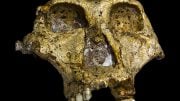
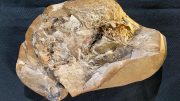
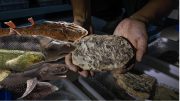
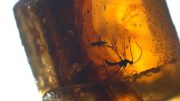
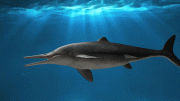
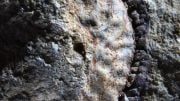
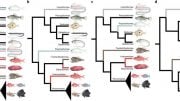
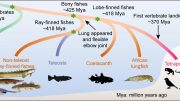
Seems like good advice to me if any sold information y’all can share with me about particles acceleration or storage I’d love to acknowledge know its probably no big deal but I’m just letting u know I will not share the information just for personal awareness that’s all
https://scitechdaily.com/gibberish-or-genius-verbal-nonsense-reveals-limitations-of-ai-chatbots/
Interesting paper. It looks like the Chimera was feeding on a clump of annelid worms.
A lot of the pit-looking features in the fossilized material are remnants of annelid worms which may support the idea that was what the Chimera was after. Has anyone found the dermal dentures of fossil fish in deep-sea sediments. Those on the Chimera can pass for Conodonts, e.g.simple cone shaped forms.
Annelid worms… That’s a weird kink you got.
Does someone really pay these people to find this stuff and make up these articles. This Earth is not that many years old, if it were, its features would be a smooth as a cue ball from erosion through the ages.
There should be similar fossilized structures in sediments between these and the modern ones? Or is this a one-off chance discovery?
Quite an edifice of imagination here. I could think of a number of underwater events that could result in the same or similar sediment features.